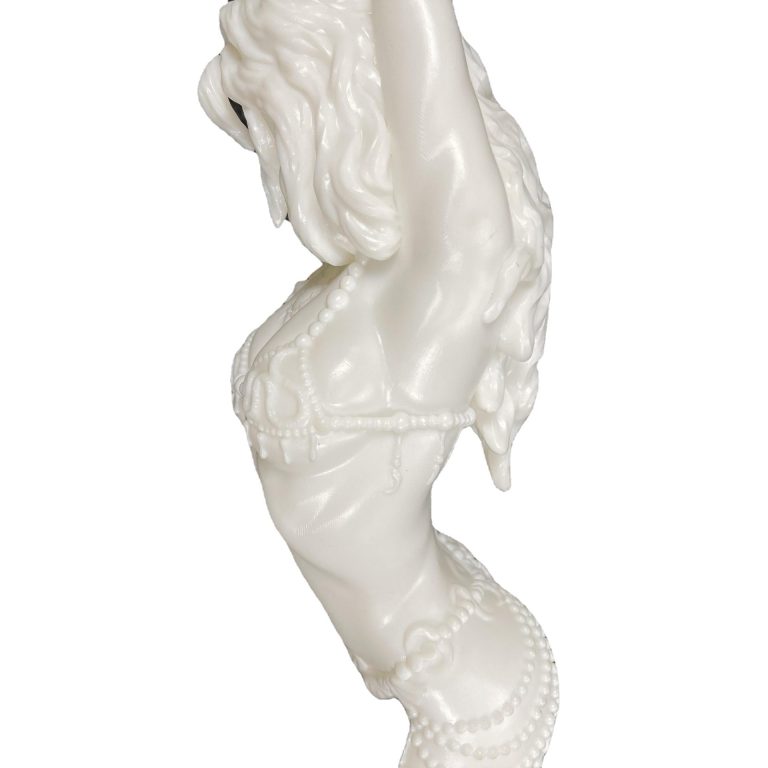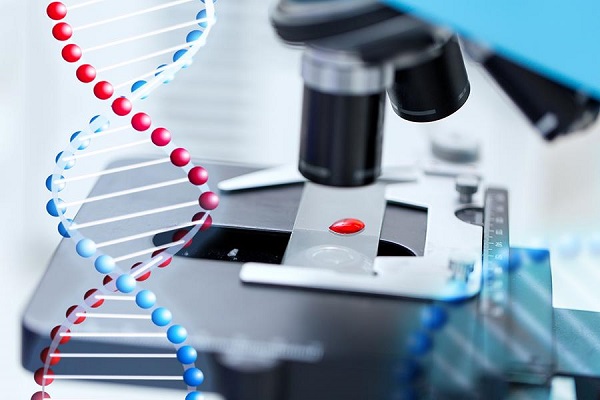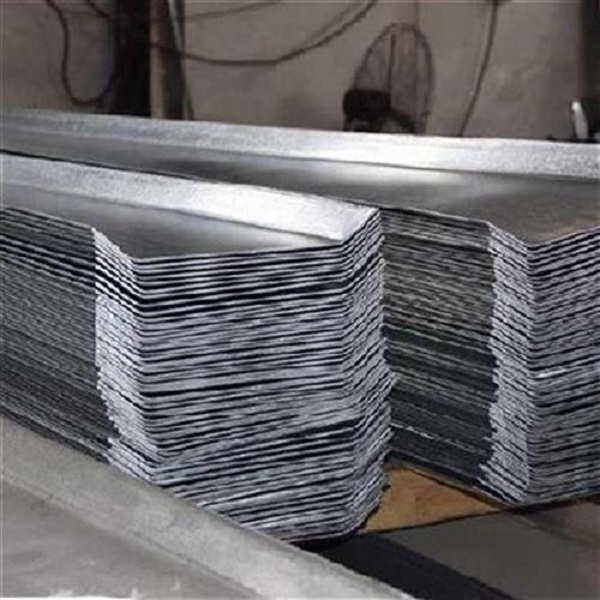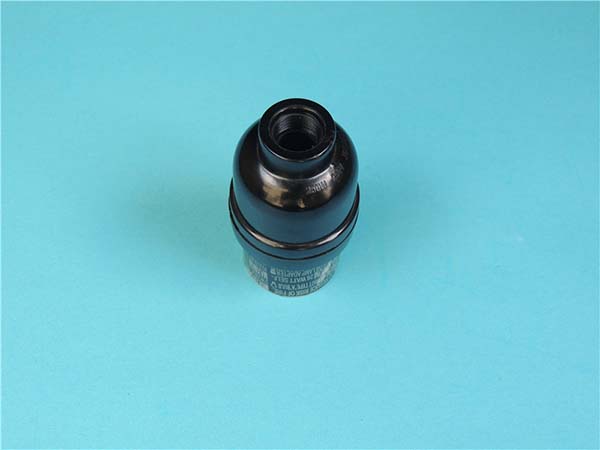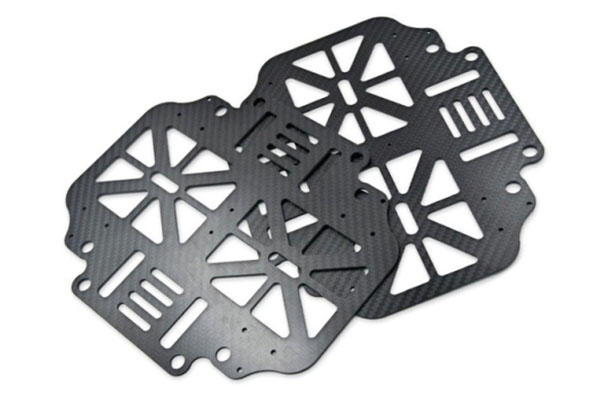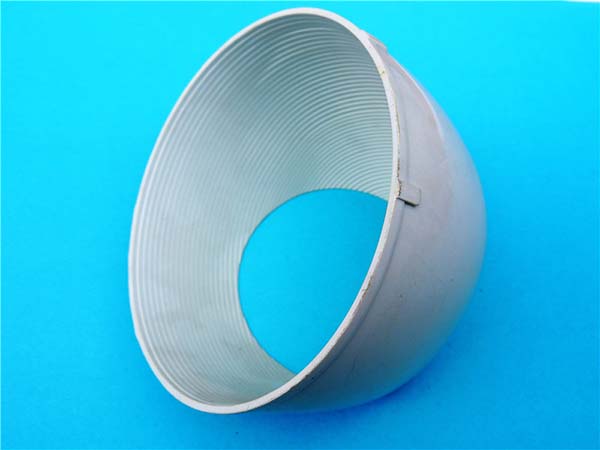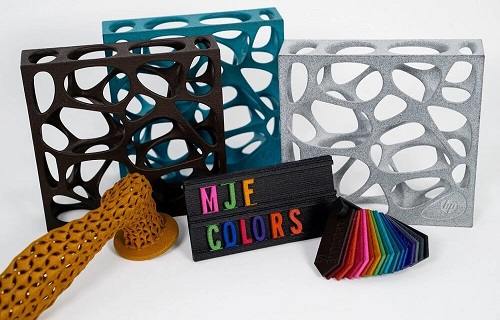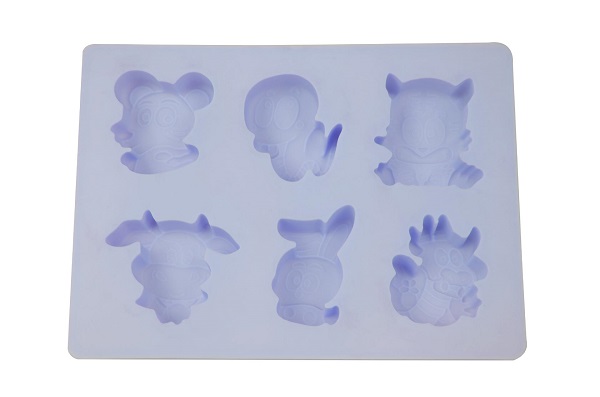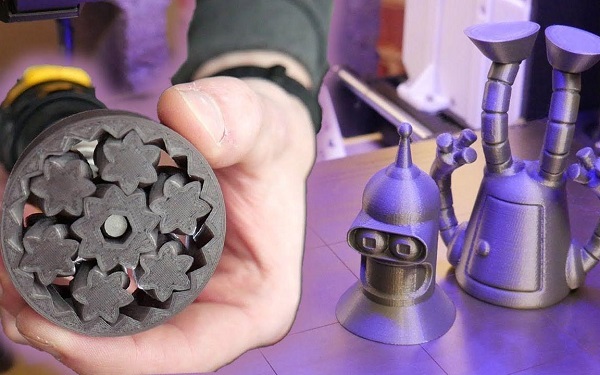Introduction
The Significance of Understanding 3D Printing Costs
For businesses, understanding 3D printing costs is crucial for several reasons. Firstly, it directly impacts the profitability of a product. If the cost of 3D printing a component is too high, it may not be economically viable to produce it using this technology. For Yigu Technology example, a small - scale consumer goods company that wants to produce a unique, customizable product using 3D printing needs to ensure that the production cost per unit is within a reasonable range to attract customers and make a profit.
Secondly, cost analysis helps in making informed decisions about whether to invest in in - house 3D printing capabilities or outsource the printing to a third - party service provider. In - house 3D printing can offer greater control over the production process, but it also involves significant upfront costs such as purchasing the printer, maintaining it, and training staff. On the other hand, outsourcing may be more cost - effective for small - scale production runs or when the required expertise is not available in - house.
For individuals, especially hobbyists and DIY enthusiasts, understanding 3D printing costs helps in planning projects within a budget. Whether it's printing a small figurine or a functional tool, knowing the cost of materials, printer usage, and any additional post - processing steps allows individuals to manage their expenses effectively.
In summary, as 3D printing continues to gain traction in various industries, a clear understanding of its costs becomes essential for making sound economic and strategic decisions. Yigu Technology will delve deep into the factors that contribute to 3D printing costs and how to accurately uncover them.
Components of 3D Printing Costs
Material Costs
The cost of materials in 3D printing can vary significantly depending on the type of material used. Here are some common 3D printing materials and their approximate cost ranges:
| Material Type | Approximate Cost per Kilogram |
| PLA (Polylactic Acid) | \(20 - \)50 |
| ABS (Acrylonitrile Butadiene Styrene) | \(30 - \)60 |
| PETG (Polyethylene Terephthalate Glycol) | \(35 - \)70 |
| Nylon | \(50 - \)100 |
| Resin (for SLA and DLP printers) | \(100 - \)500 |
| Aluminum Powder (for metal 3D printing) | \(200 - \)1000 |
| Stainless Steel Powder | \(300 - \)1500 |
| Titanium Powder | \(1000 - \)5000 |
PLA is a popular choice for hobbyists and beginners due to its relatively low cost, ease of use, and environmental friendliness. It is often used for creating decorative items, prototypes, and small functional parts. For Yigu Technology example, a small 3D - printed keychain made of PLA might cost only a few cents worth of material.
ABS, on the other hand, is more durable and heat - resistant than PLA, making it suitable for applications where strength is required, such as mechanical parts. However, it is more expensive and requires a higher printing temperature, which can also increase the overall cost.
Resins are used in stereolithography (SLA) and digital light processing (DLP) 3D printers. They offer high - resolution printing and are commonly used for creating detailed models, jewelry, and dental applications. The high cost of resin is due to its specialized chemical composition and the need for precise manufacturing processes.
Metal powders are used in metal 3D printing, which is mainly employed in industries like aerospace, automotive, and healthcare for producing high - strength components. The cost of metal powders is high because of the complex production methods involved in creating fine - grained, homogeneous powders suitable for 3D printing.
Equipment Costs
The cost of 3D printers can range from a few hundred dollars for a basic desktop model to hundreds of thousands of dollars for high - end industrial machines. Here is a comparison of the prices of different types of 3D printers:
| Printer Type | Approximate Price Range |
| FDM (Fused Deposition Modeling) Desktop Printers | \(200 - \)5000 |
| SLA (Stereolithography) Desktop Printers | \(1000 - \)10000 |
| FDM Industrial Printers | \(5000 - \)50000 |
| SLA Industrial Printers | \(10000 - \)200000 |
| SLS (Selective Laser Sintering) Printers | \(50000 - \)500000+ |
| DMLS (Direct Metal Laser Sintering) Printers | \(100000 - \)1000000+ |
FDM desktop printers are the most affordable option and are widely used by hobbyists, students, and small businesses for basic prototyping and small - scale production. They work by melting a thermoplastic filament and extruding it layer by layer to build the object. For Yigu Technology instance, a popular FDM desktop printer like the Ender 3 V2 can be purchased for around \(200 - \)300, making it accessible to a wide range of users.
SLA desktop printers offer higher precision and better surface finish compared to FDM printers. They use a laser to cure a photosensitive resin layer by layer. The price of SLA desktop printers is higher due to the more complex technology involved, such as the need for a high - precision laser system and a resin tank.
Industrial 3D printers, whether FDM or SLA, are larger, more powerful, and more accurate than their desktop counterparts. They are designed for high - volume production and can handle larger build volumes and more advanced materials. For example, an industrial FDM printer might be used by a medium - sized manufacturing company to produce custom - made jigs and fixtures for their production line.
SLS and DMLS printers are used for more advanced applications, especially in the production of metal parts. SLS printers use a laser to sinter powdered materials, while DMLS printers fully melt the metal powder to create solid parts. The high cost of these printers is due to the sophisticated laser systems, powder handling mechanisms, and the need for a controlled environment to ensure the quality of the printed parts.
In addition to the initial purchase cost, there are also ongoing costs associated with 3D printers, such as maintenance, replacement parts, and software upgrades. For example, the nozzles of FDM printers may need to be replaced periodically due to wear and tear, and SLA printers may require regular cleaning and replacement of the resin tank and laser components.
Labor Costs
Labor costs in 3D printing include the time and effort required for several tasks.
1. Model Preparation
Before 3D printing, a 3D model needs to be created or obtained. If the model is complex and requires custom design, hiring a professional 3D modeler can be costly. The hourly rate of a 3D modeler can range from \(30 - \)100, depending on their experience and the complexity of the project. For example, creating a highly detailed 3D model of a custom - designed prosthetic limb might take a skilled modeler 20 - 30 hours, resulting in a labor cost of \(600 - \)3000 just for the design phase.
2. Printer Operation
Operating a 3D printer also requires labor. Although modern 3D printers are relatively automated, an operator still needs to set up the printer, load the materials, start the print job, and monitor the process for any issues. In a professional setting, an operator might be paid an hourly wage. For a small - scale 3D printing service, an operator might earn \(15 - \)25 per hour. If a print job takes 10 hours to complete and requires intermittent monitoring, the labor cost for operation could be \(150 - \)250.
3. Post - processing
After the 3D printing is complete, post - processing is often necessary. This can include removing support structures, sanding, polishing, painting, and assembly. Post - processing can be a labor - intensive process, especially for complex parts. For example, removing the support structures from a detailed SLA - printed jewelry piece and polishing it to a high - quality finish might take an experienced technician 2 - 3 hours. If the technician is paid \(20 per hour, the post - processing labor cost for that single piece would be \)40 - $60.
Overhead Costs
Overhead costs are the indirect costs associated with 3D printing operations.
1. Facility and Space
If you are running a 3D printing business or have an in - house 3D printing operation, you need to consider the cost of the physical space. This includes rent, utilities, and insurance. For a small 3D printing studio in a medium - sized city, the monthly rent could be \(1000 - \)3000, depending on the location and size of the space. Utilities, such as electricity and heating, can add another \(200 - \)500 per month. Insurance to cover the equipment and potential liabilities might cost \(100 - \)300 per month.
2. Energy Consumption
3D printers consume electricity during operation. The energy consumption depends on the type of printer and the length of the print job. For Yigu Technology example, a desktop FDM printer might consume around 100 - 200 watts of power per hour, while an industrial SLS printer could consume several kilowatts. If a high - power industrial printer runs for 10 hours a day, 5 days a week, and the cost of electricity is $0.15 per kilowatt - hour, the monthly energy cost could be several hundred dollars.
3. Maintenance and Repairs
Regular maintenance is essential to keep 3D printers in good working condition. This includes tasks like cleaning the printer, lubricating moving parts, and replacing worn - out components. The cost of maintenance can vary depending on the type of printer. For a desktop FDM printer, annual maintenance costs might be around \(100 - \)300, which includes the cost of replacement parts like nozzles and belts. For an industrial 3D printer, maintenance costs can be significantly higher, potentially several thousand dollars per year, due to the more complex machinery and the need for specialized technicians.
4. Software and Licensing
Many 3D printers require software for operation, and some software may come with licensing fees. For example, professional 3D printing software like Autodesk Netfabb, which offers advanced features for model optimization and print preparation, may have an annual licensing fee of \(500 - \)1500. There are also open - source software options available for free, but they may lack some of the advanced features of commercial software.
Factors Affecting 3D Printing Costs
Printing Technology Type
There are several types of 3D printing technologies, and each has its own cost characteristics due to differences in working principles and equipment requirements.
Fused Deposition Modeling (FDM)
FDM printers work by melting a thermoplastic filament and extruding it layer by layer. They are relatively inexpensive, with desktop models available for as low as a few hundred dollars. The material cost for FDM is also relatively low, especially for common filaments like PLA and ABS. However, FDM printers generally have lower precision compared to some other technologies, and the surface finish of the printed parts may be rougher, which may require additional post - processing, adding to the overall cost. For example, if you are printing a simple plastic toy prototype, an FDM printer can get the job done at a relatively low cost. But if high precision and a smooth surface finish are required, such as for a small mechanical component, FDM may not be the best choice without significant post - processing.
Stereolithography (SLA)
SLA printers use a laser to cure a photosensitive resin layer by layer. They offer high - resolution printing and can create parts with very fine details. The cost of SLA printers is higher than FDM printers, with desktop models starting at around $1000 and industrial models reaching up to hundreds of thousands of dollars. The resin materials used in SLA are also more expensive than FDM filaments. Additionally, SLA printers often require a more controlled environment, such as a specific temperature and humidity range, which can add to the overhead costs. For instance, when printing a detailed jewelry prototype or a dental model, SLA's high - precision capabilities make it a suitable choice, but the higher costs need to be considered.
Selective Laser Sintering (SLS)
SLS printers use a laser to sinter powdered materials, such as nylon, metal powders, or ceramic powders. This technology is suitable for producing parts with complex geometries and high strength. SLS printers are quite expensive, with prices ranging from \(50000 to over \)500000. The powder materials can also be costly, especially for high - performance metals like titanium. However, SLS has the advantage of not requiring support structures in most cases, which can save on material and post - processing costs for complex parts. For example, in the aerospace industry, SLS is used to print lightweight, high - strength components with internal lattice structures that would be difficult to produce with other methods.
Direct Metal Laser Sintering (DMLS)
DMLS is similar to SLS but is specifically designed for metal 3D printing. It fully melts the metal powder to create solid parts. DMLS printers are among the most expensive 3D printing equipment, with prices often exceeding $1000000. The metal powders used in DMLS, such as stainless steel, aluminum, and titanium, are also very costly. DMLS is mainly used in industries where high - strength, high - precision metal parts are required, such as aerospace, automotive, and medical implants. The high cost is justified by the ability to produce parts with excellent mechanical properties and complex geometries that are otherwise challenging to manufacture. For example, a custom - designed titanium implant for a patient can be produced using DMLS, but the cost of the printing process is significant.
Part Complexity
The complexity of a 3D - printed part has a significant impact on its cost.
Geometric Complexity
Parts with complex geometric shapes, such as those with intricate internal channels, undercuts, or organic forms, are more expensive to print. For example, a 3D - printed engine component with complex cooling channels inside requires more time to print and may need additional support structures. These support structures not only consume extra material but also need to be removed and post - processed after printing, adding to the labor and material costs. In contrast, a simple cube - shaped part is much easier and cheaper to print as it has a straightforward geometry and requires less printing time and no complex support structures.
Fine Structures
Parts with fine details or small features also increase the cost. When printing a part with very thin walls or tiny protrusions, the printer needs to operate with high precision. This often requires slower printing speeds to ensure accuracy, which increases the overall printing time. For example, a 3D - printed micro - mechanical part with small gears and shafts needs to be printed with great precision. The printer may need to use a smaller nozzle or a more precise laser system, and the printing process may take longer to ensure that the fine structures are printed correctly. This results in higher equipment usage costs and potentially higher material costs if a more expensive, high - precision material is required.
Part Size
The size of the 3D - printed part is directly related to the cost.
Material Usage
Larger parts require more material, which directly increases the material cost. For example, if you are printing a small keychain made of PLA, it may only use a few grams of material, costing just a few cents. But if you are printing a large industrial prototype, such as a full - scale car interior component, the amount of material needed can be several kilograms, resulting in a much higher material cost. The relationship between part size and material cost is approximately linear, meaning that doubling the size of a part (assuming a uniform shape) will roughly double the amount of material required.
Printing Time
Larger parts also generally take longer to print. The printing time is a significant factor in the overall cost as it affects the equipment usage cost and, in some cases, the labor cost if an operator needs to monitor the print job for an extended period. For instance, a small figurine that can be printed in an hour on an FDM printer may cost only a few dollars in equipment usage and labor (if any). But a large, multi - hour print job for a large - scale architectural model on an industrial 3D printer can cost hundreds of dollars in equipment usage, energy consumption, and potentially operator time.
Quantity of Production
The quantity of parts being produced can also impact the cost per unit.
Single - Unit Production
For single - unit production, the cost per part is relatively high because all the setup costs, material costs, and equipment usage costs are concentrated on that one part. For example, if a designer wants to create a one - of - a - kind jewelry piece using 3D printing, they need to cover the cost of designing the 3D model, setting up the printer, and using the materials, even though only one item is being produced. The high cost per unit in single - unit production is mainly due to the lack of economies of scale.
Batch Production
When producing multiple units, there may be some cost savings. Some 3D printing technologies can print multiple parts simultaneously, which can reduce the per - unit equipment usage cost. Additionally, buying materials in larger quantities may result in volume discounts. For example, a small - scale manufacturer producing 100 identical plastic parts using an SLS printer can benefit from the fact that the setup cost is spread over 100 units, and they may be able to negotiate a better price for the powder material. However, the extent of cost savings in batch production varies depending on the 3D printing technology. In some cases, such as with some FDM printers, the cost savings may be relatively small as the printing speed and the ability to print multiple parts simultaneously may be limited. But for more advanced technologies like SLS or DMLS, batch production can lead to more significant cost reductions per unit.
Case Studies
Case 1: A Small - scale Jewelry Business
A small - scale jewelry business, let's call it "GlimmerGems," decided to adopt 3D printing to create custom - designed jewelry pieces. GlimmerGems was facing stiff competition from larger jewelry brands and saw 3D printing as a way to offer unique, personalized products to its customers.
Cost Breakdown
- Material Costs: GlimmerGems primarily used resin for its 3D - printed jewelry. The cost of the resin was approximately \(200 per liter. On average, each small - sized jewelry piece, such as a pendant or a ring, used about 5 - 10 milliliters of resin. So, the material cost per piece ranged from \)1 - \(2. However, for more elaborate designs with intricate details, the resin usage could be higher, reaching up to 20 - 30 milliliters, increasing the material cost to \)4 - $6 per piece.
- Equipment Costs: The business invested in a mid - range SLA desktop 3D printer, which cost around \(3000. The printer had a lifespan of about 3 years with regular maintenance. Considering the annual maintenance cost of approximately \)500, the total equipment - related cost over 3 years was \(3000 + (\)500 x 3) = \(4500. If GlimmerGems produced 1000 jewelry pieces over these 3 years, the equipment cost per piece was approximately \)4.5.
- Labor Costs: Designing the 3D models for the jewelry pieces was a crucial step. GlimmerGems hired a part - time 3D modeler who charged \(50 per hour. On average, it took 2 - 3 hours to design a unique jewelry model, resulting in a design cost of \)100 - \(150 per model. If the model was used to produce 50 pieces, the design cost per piece was \)2 - \(3. The actual printing process, including setting up the printer, monitoring the print, and removing the printed piece, took about 1 - 2 hours per batch (a batch could have 5 - 10 pieces depending on the size of the build plate). The operator was paid \)20 per hour. So, the labor cost for printing per piece was approximately \(2 - \)4. Post - processing, which included cleaning the resin, removing support structures, and polishing, took another 1 - 2 hours per piece. The post - processing labor cost was also \(20 per hour, resulting in a post - processing cost of \)20 - $40 per piece.
- Overhead Costs: GlimmerGems operated from a small studio with a monthly rent of \(1000. Utilities, mainly electricity for running the printer and lighting the studio, cost about \)200 per month. Insurance for the equipment and the business was \(100 per month. So, the total monthly overhead cost was \)1300. If the business produced 100 pieces per month, the overhead cost per piece was approximately $13.
Cost - Reduction Strategies
- Material Optimization: GlimmerGems started to experiment with different resin suppliers and found a new one that offered a similar - quality resin at a 20% lower cost. This reduced the material cost per piece by about \(0.2 - \)1.2 depending on the resin usage per piece.
- Printer Efficiency: The business optimized the printer settings to reduce the printing time. By adjusting the layer height and the printing speed, they were able to reduce the printing time by about 20%. This led to a decrease in the labor cost for printing per piece by about \(0.4 - \)0.8.
- Bulk Material Purchasing: GlimmerGems started to buy resin in larger quantities. By doing so, they were able to negotiate a volume discount of 10% from the supplier. This further reduced the material cost per piece.
Results
After implementing these cost - reduction strategies, GlimmerGems was able to reduce the total cost per jewelry piece by about 15 - 20%. This allowed them to offer more competitive prices to their customers while maintaining a healthy profit margin. The ability to offer custom - designed jewelry at a reasonable price also helped them attract more customers, and their sales volume increased by 30% within a year.
FAQs
What is the most cost - effective 3D printing technology for small - scale production?
For small - scale production, Fused Deposition Modeling (FDM) is often a cost - effective option. Desktop FDM printers are relatively inexpensive, with prices starting from a few hundred dollars. The materials used in FDM, such as PLA and ABS filaments, are also affordable, usually costing between \(20 - \)60 per kilogram. FDM can handle a wide range of applications, from simple prototypes to small - scale production of functional parts. However, if high - precision and smooth surface finishes are required, Stereolithography (SLA) may be a better choice despite its higher equipment and material costs, as it can produce parts with fine details and better surface quality.
How can I estimate the cost of a 3D printed part accurately?
To accurately estimate the cost of a 3D - printed part, you need to consider several factors. First, calculate the material cost by determining the volume or weight of the part and multiplying it by the cost per unit volume or weight of the material. For Yigu Technology example, if a part made of PLA weighs 50 grams and PLA costs \(30 per kilogram, the material cost is (\)30 / 1000) * 50 = \(1.5. Then, estimate the equipment cost based on the printer's purchase price, lifespan, and the time it takes to print the part. If a printer costs \)2000 and has a lifespan of 3000 hours, and the print job takes 5 hours, the equipment cost for this part is (\(2000 / 3000) * 5 ≈ \)3.33. Labor cost should also be factored in, including model preparation, printer operation, and post - processing time, multiplied by the hourly wage of the operator. Finally, don't forget overhead costs like energy consumption, maintenance, and space. You can use online 3D printing cost calculators or create your own spreadsheet to account for all these factors.
Yes, there are some hidden costs in 3D printing. One of the often - overlooked costs is post - processing. After printing, parts may need to have support structures removed, be sanded, polished, or painted. These post - processing steps can be labor - intensive and may require additional materials, such as sandpaper, paint, or solvents. Another hidden cost is the cost of software. While some basic 3D printing software is free, more advanced software with features like advanced model optimization, support generation, and simulation may come with licensing fees. Additionally, if you plan to use 3D printing for commercial purposes, you may need to consider costs related to quality control and certification, especially in industries with strict regulations like aerospace and healthcare. There can also be costs associated with failed prints. If a print fails due to equipment issues, incorrect settings, or material problems, you not only waste the materials but also the time and energy invested in the print job.
